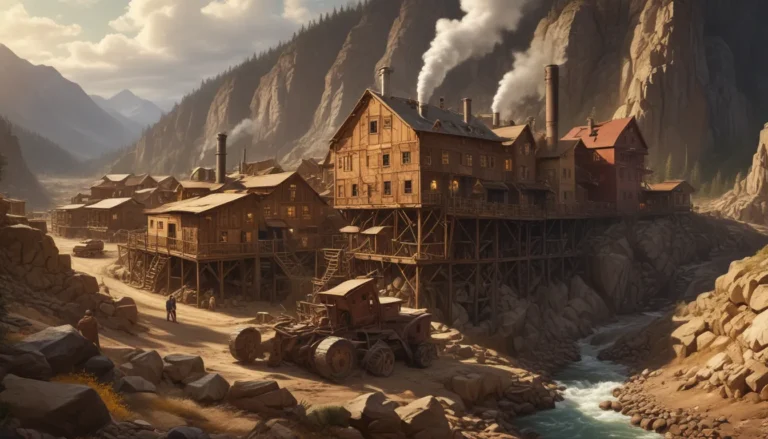The images in our articles may not match the content exactly. They are used to grab your attention, not to show the exact details in the text. The images complement the text but do not replace it.
Have you ever been curious about the iconic figures who shook up the 1920s? Look no further than the flappers, with their daring fashion choices and rebellious spirit. These trailblazing women challenged societal norms and paved the way for future generations seeking freedom and fun. But what lies beyond the surface of their flashy attire and wild parties? Dive into the captivating world of flappers as we uncover the intriguing facts that shaped their era and continue to influence modern culture.
Exploring the World of Flappers
Flappers were young women in the 1920s who defied traditional expectations of femininity and behavior. Embracing a lifestyle that was considered daring and unconventional, they symbolized a new wave of female liberation, breaking free from societal constraints both socially and sartorially.
Unraveling the Origin of Flappers
The term “flapper” originated in post-war Britain, initially used to describe young girls whose long braids would flap in the wind as they moved. Over time, it evolved to represent a new breed of young women in the United States who rebelled against conventional dress and behavior norms during the Roaring Twenties.
Flapper Fashion Through the Ages
- Short skirts and bobbed hair were iconic elements of flapper fashion, symbolizing women’s liberation from restrictive clothing and societal expectations.
- Cloche hats, with their fitted bell-shaped design, became a staple accessory for flappers, complementing the bobbed hairstyle.
- The typical “flapper dress” featured a straight, loose silhouette, dropped waistlines, and knee-length hemlines, a stark departure from previous eras’ tight corsets and long skirts.
The Role of Flappers in Society
- Flappers represented the first generation of independent American women, playing active roles in voting, entering new job opportunities, and enjoying greater freedom than their predecessors.
- Jazz music was a hallmark of the flapper era, with flappers frequenting jazz clubs and dancing provocatively, sparking controversy among more conservative segments of society.
- The ratification of the 19th Amendment in 1920, granting women the right to vote, coincided with the rise of the flapper, marking a significant milestone in women’s societal roles.
Flappers and Prohibition: A Spirited Affair
- The Prohibition era in the U.S. (1920-1933) saw the rise of speakeasies, illicit bars where alcohol was clandestinely served and consumed. Flappers, known for their love of fun and disregard for convention, were frequent patrons.
- Flappers and their social circles played a key role in popularizing cocktail culture during Prohibition, despite the legal restrictions on alcohol consumption.
The Enduring Legacy of Flappers
- Flappers were instrumental in driving the cultural shift towards modernity in the early 20th century, challenging traditional gender norms and laying the groundwork for future generations of empowered women.
- Beyond their fashion and social antics, flappers were intertwined with the feminist movement, advocating for a new form of female empowerment.
- While the Great Depression marked the decline of the flapper lifestyle in the early 1930s, their influence on fashion, music, and women’s rights continues to be celebrated and romanticized in popular culture.
- Movies and literature from the 1920s often feature flappers, such as F. Scott Fitzgerald’s “The Great Gatsby,” immortalizing their era and impact on American society.
- Modern fashion still draws inspiration from flapper styles, particularly in evening wear and costume design, with elements like fringe, sequins, and the classic bob haircut paying homage to their legacy.
- The spirit of flappers challenges societal norms and expectations, setting a precedent for future movements advocating for women’s rights and freedoms.
Reflections on the Legacy of Flappers
Flappers were more than just fashion icons; they represented a bold assertion of independence and a defiance of societal norms. These women of the 1920s embraced newfound freedoms with vigor, leaving an indelible mark on history. Their lasting legacy serves as a testament to the enduring fight for gender equality and the power of self-expression. As we reflect on their era, let’s honor not only the glamour and excitement but also the courage it took for flappers to usher in a new epoch, reshaping the realms of fashion and feminism while inspiring generations to live authentically.
Conclusion
Unraveling the captivating world of flappers reveals a rich tapestry of history, fashion, and cultural revolution. Their story transcends mere rebellion, embodying a spirit of liberation and empowerment that continues to resonate today. As we pay homage to these trailblazers of the Roaring Twenties, let us celebrate their legacy and embrace the lessons they impart on living boldly and authentically in a world ripe for change.
Your Feedback Matters
As we strive to deliver engaging and informative content, your feedback is invaluable. Each fact shared on our platform is contributed by users like you, ensuring a diverse array of insights and information. Our dedicated editors meticulously review each submission to maintain the highest standards of accuracy and credibility. Explore, learn, and trust in our commitment to quality and authenticity as we embark on a journey of discovery together.






